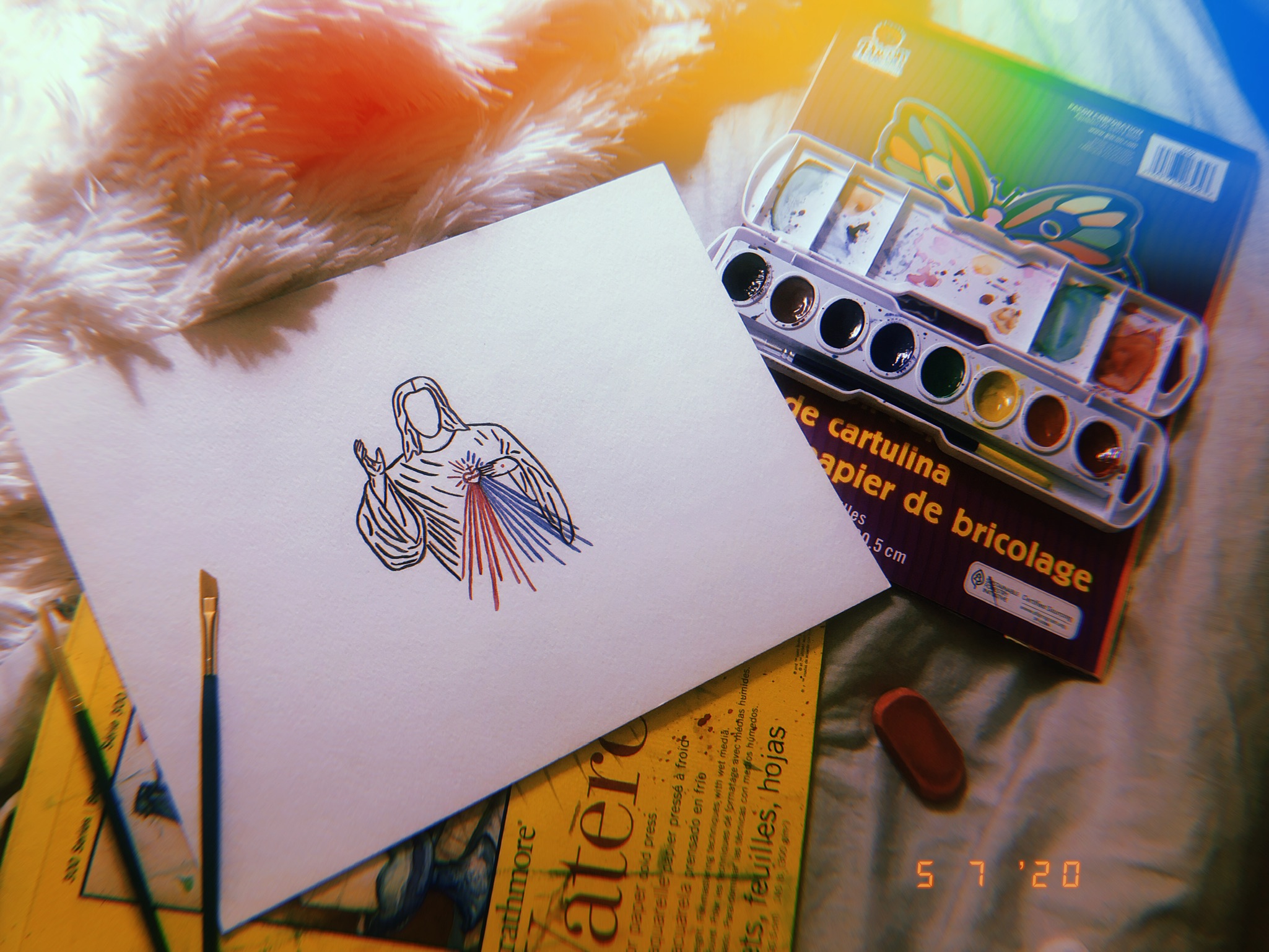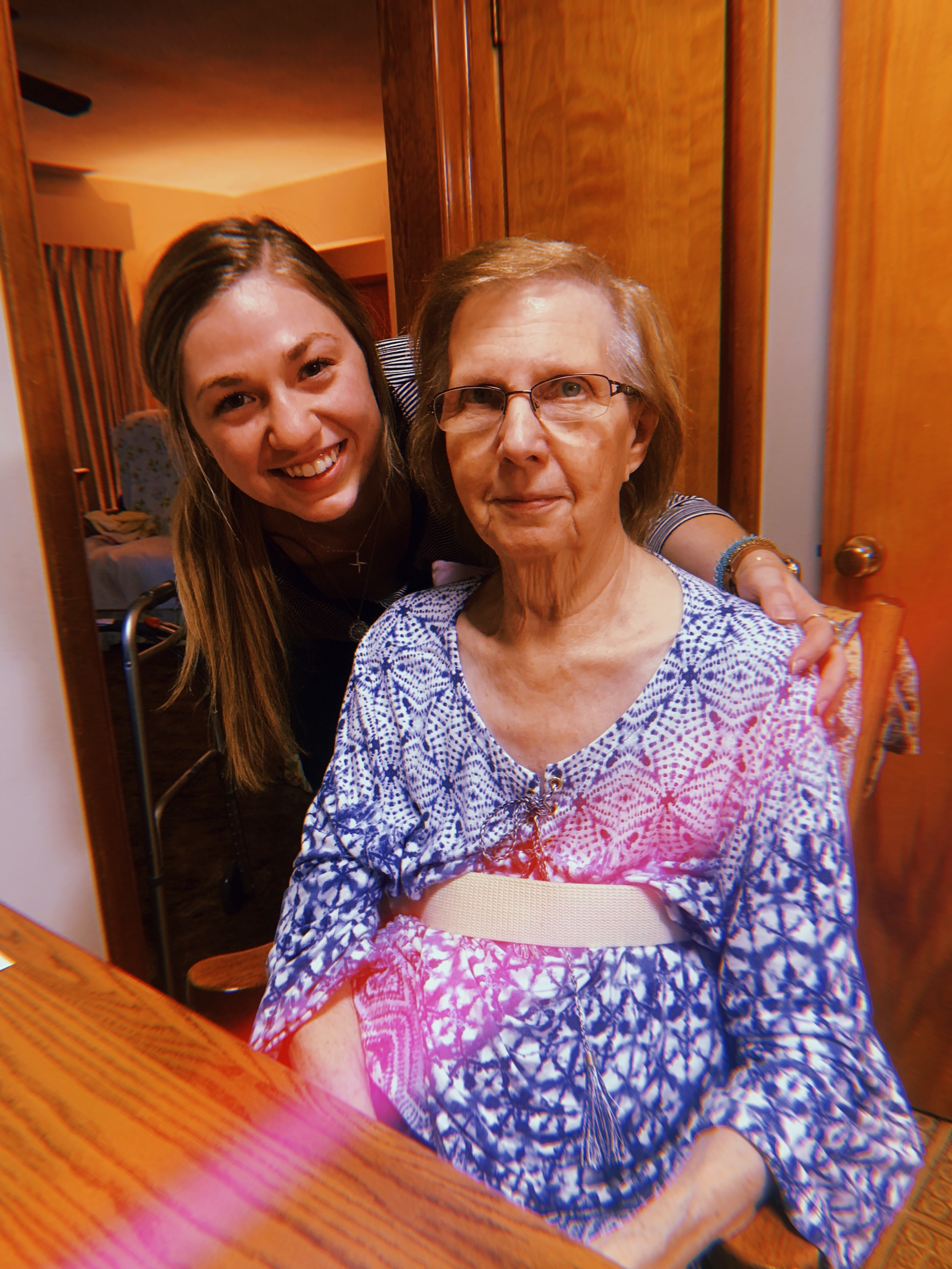To pick up where Nicole left off, the House of Brigid had just consumed pizza, added 82 blankets to the various beds, prayed as a community, and had gone to bed (If you missed Part I, read it here). But before we talk about our full day in the sanctuary of Fátima, I realized that many people might not know the story of the apparitions. Cue flashback…
The Story of Fátima:
On May 13th, 1917, three small shepherd children, named Lúcia, Jacinta, and Francesco, were herding their sheep near their small village of Fátima when they saw a women who was “brighter than the sun, shedding rays of light clearer and stronger than a crystal ball filled with the most sparkling water and pierced by the burning rays of sun. She would appear to them again on the thirteenth day of June and July. During these appearances, the woman asked the children to do penance, Acts of Reparation, and to make sacrifices to help save sinners. The children then wore tight cords around their waist to cause themselves pain, abstained from drinking water on hot days, and did other works of penance. Later, she asked them to tell people to pray the Rosary, to dedicate themselves to her Immaculate Heart, and to receive communion on the first Saturdays of the month in reparation for the world’s sins. Also during this time, the woman gave them three secrets to keep until the appointed time. The first secret was a vision of hell, the second secret was that Russia was to be converted to Her Immaculate Heart, and the third secret was a vision of the suffering and agony of the Pope and his death at the hands of soldiers on top of a large hill (Fun Fact: At the time, the Soviet revolution was just about to begin, and Russia was only known as a great seat of Orthodoxy, leading to great puzzlement over the second secret; it only became apparent much later why Russia was to be consecrated to Mary’s Immaculate Heart.) Each of these secrets and visions had one purpose: It was the Blessed Virgin Mary asking for the world to return to God and to be consecrated to her Immaculate Heart.
However, the local administrator did not look kindly on the children, seeing them as disruptive, and had them jailed on August 19, 1917. While in jail, the children were consoled by the prisoners, and prayed the Rosary with them. Eventually, the administrator questioned the children, trying unsuccessfully to get them to reveal the Three Secrets of Fátima. At one point he even threated to burn them in a pot of oil unless they confessed. However, the children refused. Because they were delayed, the children did not see Holy Mary at the usual spot on the 13th, but instead saw her on the feast of the Assumption on August 15th in nearby Valinhos.
On October 13th, 1917, many pilgrims had made their way, alongside the children, to the site of the apparitions, for Mary had promised a miracle the last time she appeared to the children. As the rain ceased, the sun became dim and easy to look upon. Lúcia urged the crowd to look at the sun, and the sun began to change colors, rotated with great speed like a wheel, and danced across the sky. Witnesses as far away as 40 kilometers saw the miracle.
Our Story…
So, the next morning, we woke up relatively early and made our way to a local cafe for breakfast. After really good and really cheap coffee and croissants, we made our way to Chapel of Apparitions to say the Rosary, which was said, as you might guess, in Portuguese. If you look in the picture below, you can just see the organ they keep in the outside chapel for a small choir to sing at each mystery of the Rosary.

The Chapel of Apparitions
Afterwards, we headed to the main Basilica for Mass. Except, the Mass wasn’t in the Basilica, it was in the Church of the Most Holy Trinity, which was a giant church at the other end of sanctuary (which just means the complex of the shrine). Why were we confused? We found out later that the maps we had from our hostel were outdated, and hadn’t accounted for the recent construction that moved most of the chapels and prayer services to the huge church and underground chapels.
Although we missed that Mass, there were several throughout the day, so we weren’t worried about fulfilling our obligation. Instead, we decided to walk the Via Sacra, or Holy Path, to the children’s homes. The path was so named because as you followed it, you followed the stations of the Cross, eventually coming to a small chapel and courtyard. After spending some time in prayer, we continued on until we reached the homes of the three children, which were unfortunately closed (A common theme during the trip was that no matter what day it was, most of everything was closed). Instead, we went to a small museum of the children’s items, made friends with a pair of goats, and broke off to go do our own individual things.
One of the things I always like to do whenever I go on pilgrimage or travel somewhere far off is to go to Confession, so I decided to head off to find the Reconciliation chapel. After finding it on my map, I headed to where it was. As you might assume, it was not where the map said. I then approached the information desk, where the guide didn’t understand English, but did speak Italian. Now, I haven’t used my Italian since I studied it for three semesters a couple of years ago, but by the grace of God we had a full conversation and I found out where most of the buildings and chapels were. (For the rest of the day my conversations consisted of being in Italian, because I didn’t speak Portuguese and a lot of whom I talked to didn’t speak English. Some conversations went better than others…) As I went to the Chapel and walked in, I was greeted by a volunteer who sat me down in line. A minute later, she approached me and asked which language I spoke. Hopefully, I said English. Immediately she grimaced and said that she was sorry, but none of the priests spoke English who were on duty. I then blurted out if any of them spoke Italian. She nodded, said she would check, and sat me down again.
Have you ever had one of those moments when as soon as you say something you wish you could take it back? That as the words leave your mouth you could physically force That was one of mine. So, I sat for a full ten minutes wondering how the heck I was going to get through a Confession in Italian, a language I only brokenly spoke, and a language that I don’t know how to say prayers or sins in. So, bravely, I thumbed through my prayer book to find the Latin prayers and rite for Confession, hoping there was something in there I could use. Fortunately, there was no priest who spoke Italian, so while I did not receive Confession, I did avoid an ill-fated attempt to do so (Nicole would later say she was going to do the same thing with French, and then realized her confession would consist entirely of French words for food products). For me, the rest of the day consisted of quiet reflection and wandering around the various buildings and churches for prayer and adoration.
That evening, we attending sung Vespers in the Church, and I attended the Mass afterwards. By this point our Portuguese had gotten pretty good, so we were able to sing most of vespers out of the book, and I was able to get most of the Mass responses down. We ended the night together by saying a candlelit rosary, and attending a candle light procession. Actually, the procession didn’t really happen, even though it was on the schedule, so we just quietly processed, the four of us, a short, short, distance to where the votive candles were and added ours to the collection. So, our bodies tired from walking all day, and our spirits tired from prayer and travel, we returned to our guesthouse, said our prayer together, and then went to bed, rising the next morning to catch our bus,then our plane and return home to our house.


